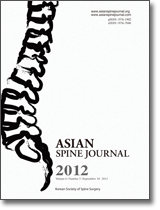
Demineralized bone matrix vs. B-tricalcium phosphate graft material for ACDF

Demineralized bone matrix vs. B-tricalcium phosphate graft material for ACDF
A Prospective Randomized Clinical Trial Comparing Bone Union Rate Following Anterior Cervical Discectomy and Fusion Using a Polyetheretherketone Cage: Hydroxyapatite/B-Tricalcium Phosphate Mixture versus Hydroxyapatite/Demineralized Bone Matrix Mixture
Asian Spine J. 2015 Feb;9(1):30-8Did you know you're eligible to earn 0.5 CME credits for reading this report? Click Here
Synopsis
85 patients scheduled for single level anterior cervical discectomy and fusion (ACDF) were randomized to one of two graft materials. PEEK cages of one group were filled with a hydroxyapatite and demineralized bone matrix (HA/DBM) mixture, and in the other group with a hydroxyapatite and beta-tricalcium phosphate (HA/B-TCP) mixture. The purpose of this study was to test the noninferiority of the HA...
To view the full content, login to your account,
or start your 30-day FREE Trial today.
FREE TRIAL
LOGIN
Forgot Password?
Explore some of our unlocked ACE Reports below!

Learn about our AI Driven
High Impact Search Feature
Our AI driven High Impact metric calculates the impact an article will have by considering both the publishing journal and the content of the article itself. Built using the latest advances in natural language processing, OE High Impact predicts an article’s future number of citations better than impact factor alone.
Continue



 LOGIN
LOGIN

Join the Conversation
Please Login or Join to leave comments.